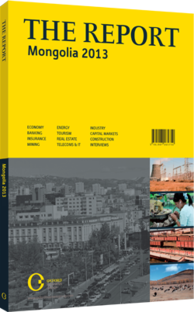OBG talks to P. Batsaikhan, Chairman and President, Shunkhlai Group

Interview: P. Batsaikhan
Mongolia is set to see several years of high double-digit growth. Are local producers able to deal with supply side pressures and stay ahead of demand?
P. BATSAIKHAN: At the moment most companies need to import a large part of the raw materials needed for production. However, in some cases, the increasing demand from local consumers may enable local producers and manufacturers to substitute imported goods and start producing locally instead. Transporting and shipping over borders still raises the cost of final products significantly. Therefore, it’s very important to invest in infrastructure projects, like additional railways and more efficient border gates, in order to keep the overall costs of imports and exports as low as possible.
Development of non-resource-based sectors is a key development priority for the next decade. In which sectors would you like more foreign participation through direct investment and funding?
BATSAIKHAN: Foreign investors mainly view Mongolia as a destination for mining-related investment. The advantage of mining revenues is they will always end up boosting the consumer goods sector. As a result, it’s been predicted that Mongolia’s domestic consumption will double within the next two to three years. In general, there are growth opportunities in every sector, including mining, infrastructure and transport. Opportunities also exist related to the improvement of our citizens’ quality of life. These include housing projects and the manufacturing of different consumer goods. People are also consuming more and expect a continuous increase in the variety of goods and services available. In addition, the concept of free competition needs to be underlined.
After years of investment in the latest technology, do you think domestic producers in your sector are ready to face international competition?
BATSAIKHAN: Apart from being able to provide traditional Mongolian products, which are unique, I believe that any producer that is able to meet the standards of domestic consumers should be able to compete in a foreign market. As far as international trade goes, Mongolia has not, so far, had a lot of experience operating in those markets though – apart from the commercialisation of cashmere. As of late, numerous Mongolian companies, including ours, have been investing strongly in technologies imported from Europe. For example, the APU factory successfully integrated the latest technology, and is continuing to improve operations.
Mongolian companies are growing and expanding their operations both locally and internationally. However, when it comes to expanding internationally a little more experience is required, particularly regarding networking with international industry players. In terms of competing with much larger neighbouring economies, such as China, we don’t see our domestic production as a rival to Chinese products. Instead, we consider China a potential new market for our domestically produced goods.
How important is the local capital market as a source of funding and public visibility? To what extent are banks getting involved in financing local growth?
BATSAIKHAN: Hopefully with the expansion of the economic base and the increased competitiveness of our domestic enterprises, the role of the Mongolian capital markets will begin to see further growth. To facilitate growth of the capital market and stock exchange structure we need to have an enabling political environment and an efficient institutional structure. At the moment a majority of Mongolian businesses are financed domestically through banks. However, in the long run Mongolian companies will need to diversify their sources of capital to ensure increasing access to capital in the future so as to be able to expand operations, work more effectively and start to be able to compete on a global scale. Therefore, Mongolian companies will be actively seeking to participate in international capital markets as well as in domestic ones.
You have reached the limit of premium articles you can view for free.
Choose from the options below to purchase print or digital editions of our Reports. You can also purchase a website subscription giving you unlimited access to all of our Reports online for 12 months.
If you have already purchased this Report or have a website subscription, please login to continue.

